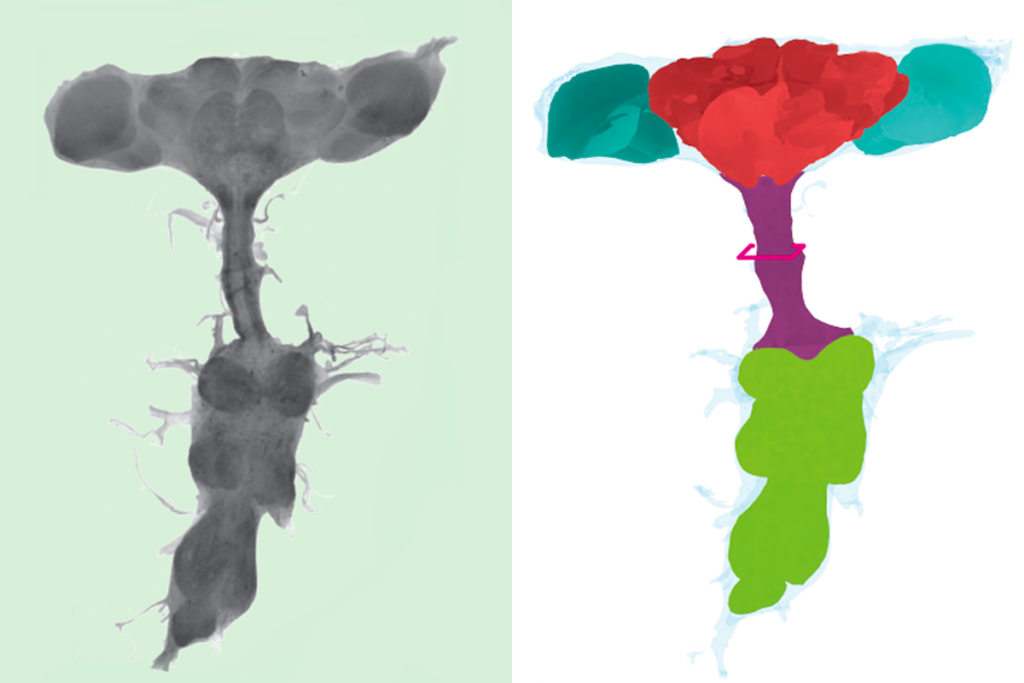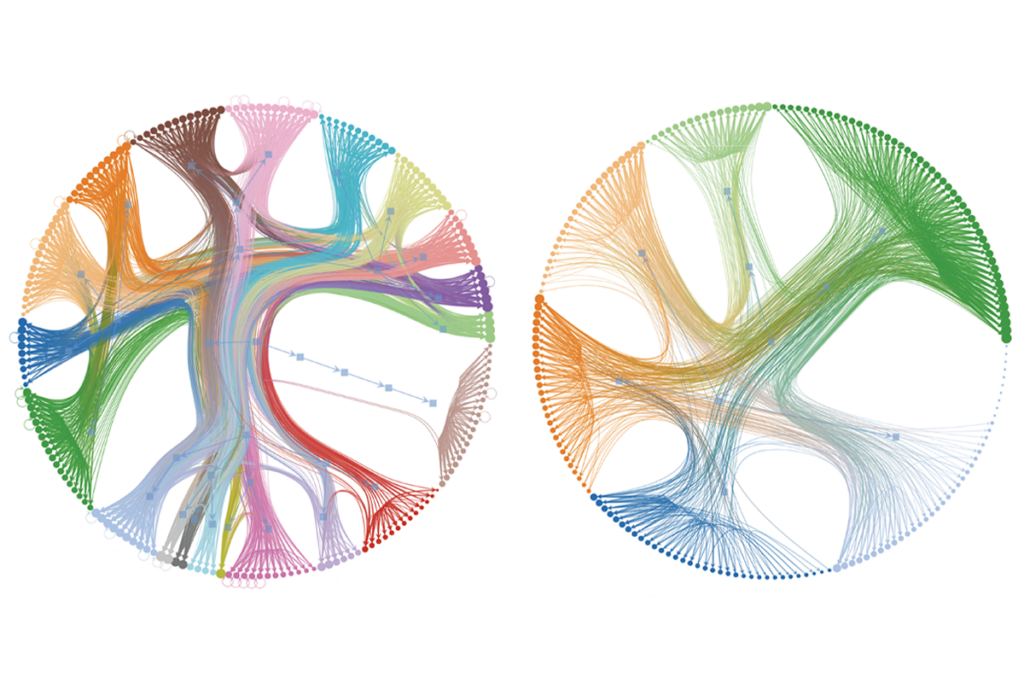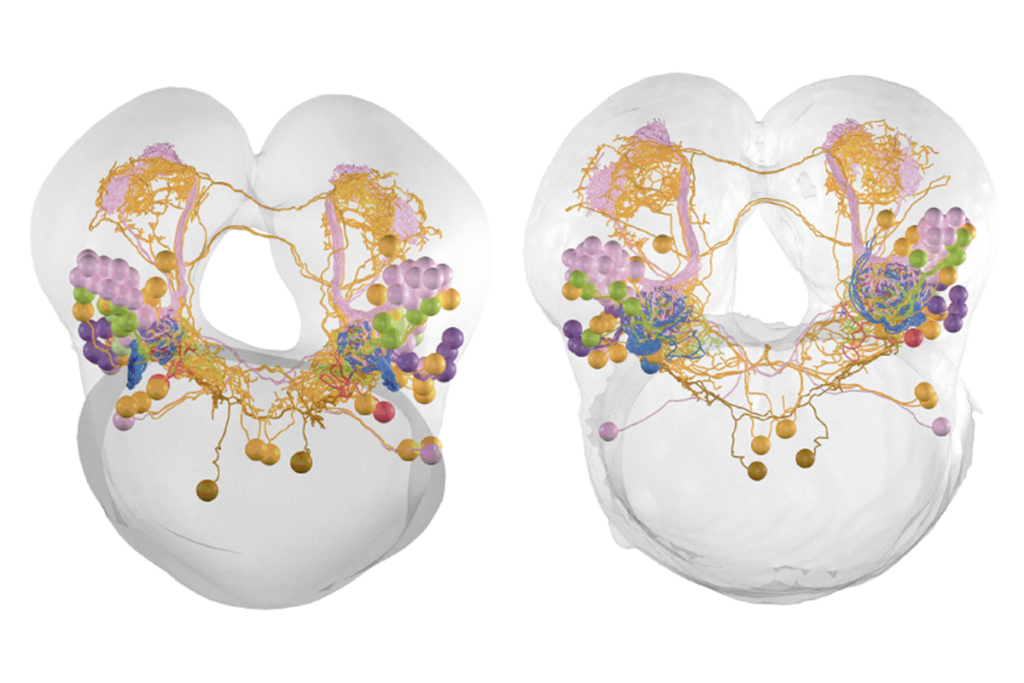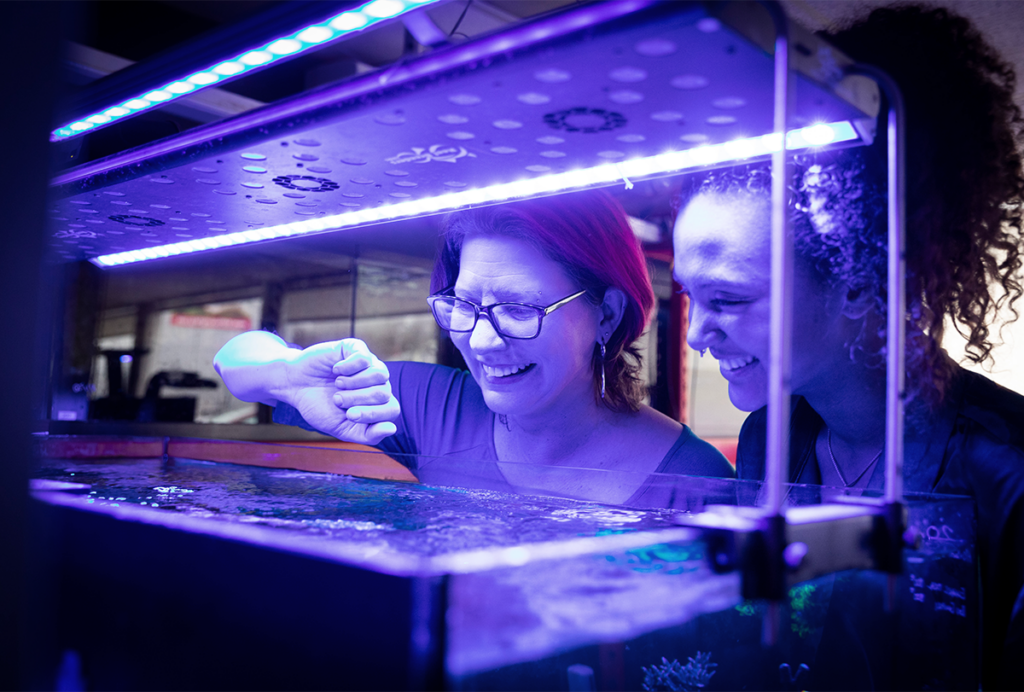First nerve-net connectome shows how evolutionarily ancient nervous system coordinates movement
The map of a comb jelly’s aboral nerve net, which helps the animal orient and position itself within the water column, reveals a unique system for sensing the world and coordinating movement.
The evolutionarily oldest nervous systems—found in ctenophores (comb jellies), cnidarians such as jellyfish and echinoderms such as sea stars—consist of diffuse, mesh-like nerve nets: interconnected neurons spread throughout the body, without a centralized brain or spinal cord.
A new study details “the first nerve-net connectome in any animal,” says study investigator Gáspár Jékely, professor of evolutionary neurobiology at Heidelberg University. This connectome reveals the wiring pattern of the aboral nerve net, which helps the comb jelly Mnemiopsis leidyi orient itself and maintain its position within the water column.
The work, published as a reviewed preprint last week in eLife, provides a glimpse into a radically different way of sensing the world and coordinating movement, Jékely says. Other creatures that have had their nervous system mapped, including nematodes, marine worms, sea squirt larvae and fruit flies, have a centralized nerve cord or brain.
The research cracks open an understudied system for further analysis of how sensorimotor coordination evolved, and it could pave the way for future comparative connectomics studies, says John Tuthill, professor of neurobiology and biophysics at the University of Washington. Tuthill was not involved in the research but served as the reviewing editor for eLife.
Comb jellies are the oldest animal lineage, making them the most closely related to the last common ancestor of all animals, says Kazuo Inaba, professor at Shimoda Marine Research Center, University of Tsukuba, who was not involved in the new work. Sponges, which diverged later, lack neurons, suggesting that comb jellies may have evolved a completely different nervous system from all other animals, he says.
The aboral nerve net, which Jékely’s team mapped, is part of the aboral organ that helps comb jellies sense and respond to gravity. The organ consists of a crystal that balances atop bundles of cilia and, like the bubble in a carpenter’s level, slides about in response to gravity, previous studies show. Mechanosensory balancer cells sense those shifts and cause the balancer cilia to beat rhythmically, kicking off a domino effect that makes larger cilia along M. leiydi’s body move to redirect the animal, Jékely explains.
I
t took two years for Kei Jokura, a former postdoctoral fellow in Jékely’s lab, to reconstruct and annotate all the cells and synapses in the 50-micrometer aboral organ—after first slicing larval tissue into 50-nanometer sections and imaging them using a scanning electron microscope.The reconstruction revealed a total of three aboral nerve net (ANN) neurons, all of which are syncytial, meaning they have multiple nuclei enclosed in a continuous membrane. The comb jelly’s subepithelial nerve net (SNN), which sits in M. leiydi’s body, is also made up of syncytial neurons, Jékely and his colleagues reported in a 2023 paper. Those were the first syncytial neurons described in any animal.

Unlike SNN neurons, which look like beads on a string, ANN neurons have a smooth surface, demonstrating that comb jellies have two distinct kinds of syncytial nerve nets, Jékely says.
The largest ANN neuron projects to all the balancer cells and the other two neurons, each of which projects to one pair of the balancer cells, the new paper shows.
The four balancer cilia all start moving together at the same time but stop moving in pairs, according to high-speed videos the team captured while M. leiydi was turned on its side. Together, this footage and the connectome suggest the cilia work in pairs, innervated by the two smaller neurons, while the large neuron orchestrates the network, Jékely says.
A canonical understanding of sensorimotor coordination would have predicted that the mechanosensory balancer cells synapse onto the ANN neurons to help them coordinate ciliary vibrations, says Jokura, now assistant professor at the National Institute for Basic Biology in Japan. But to his surprise, none of the synapses on the nerve net come from these gravity-sensing cells.
The absence of synaptic input from sensory cells suggests that instead of integrating sensorimotor information, the ANN serves “some kind of a coordinatory function” to synchronize the cilia, Jékely says. Alternatively, instead of receiving direct synaptic input, the nerve net may receive cues about the animal’s environment via diffuse signals from neuropeptides, which is common in many invertebrates, Jokura says.
Things may look different in adult jellies, because there may be “features that might be more elaborate later,” says Steven Haddock, senior scientist at the Monterey Bay Aquarium Research Institute, who was not involved in the research. Future experiments should clarify how the nerve net coordinates ciliary movement, he adds.
The study shows how researchers can customize and apply connectomics techniques first developed for canonical model organisms such as mice, fruit flies and Caenorhabditis elegans to “take advantage of the breadth of diversity of animals and just map some of the weirder nervous systems,” Tuthill says. “That’s a really effective way to kind of do comparative neuroscience.”
Recommended reading

Local circuit loops within body control fly behavior, new ‘embodied’ connectome reveals

Worms help untangle brain structure/function mystery

Cross-species connectome comparison shows uneven olfactory circuit evolution in flies
Explore more from The Transmitter

Worms help untangle brain structure/function mystery

